Makes 2.5~3kg Miso
Ingredients:
- 0.7kg (3-½ cups) dry soy beans
- 1kg (approximately 8 cups) fresg Koji (how to make Koji)
- 350g (approximately 1-½ cup) grey sea salt
- 2tbsp/20~30g additional salt to sprinkle (optional)
- *1cup = 250ml
Utensils:
- 1 4~6 quart stock pot with lid, slow cooker or pressure cooker
- 1 strainer, colander or straining ladle (ladle with holes)
- 1 musher or food processor
- 2 large stainless mixing bowls
- 1 4 quart container, salt tolerant (a large cookie jar works well) for fermentation
- 1 flat lid or small plate fit in the container
- 1 weight (1kg +/-)
- Cling wrap
- Lid of the fermentation container or newspaper and string to cover the container
- Rubbing alcohol
- Alternative container – wide mouth mason jars + plastic lids
- Wash and soak soy beans (16 ~ 48hr)
- Cook beans until a bean can be easily crushed between your thumb and pinkie finger (4~6hr in a pot, 8 ~10hr in a slow cooker or 30min~1hr in a pressure cooker – STEAM if you use a pressure cooker, don’t cook in water) .
- Sterilize utensils and work space with rubbing alcohol (dry completely before use)
- Mash cooked beans and cool it down (140°F/60°C)
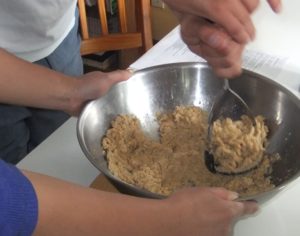
You can put hot soy beans in a heavy duty food-safe plastic bag and step on it!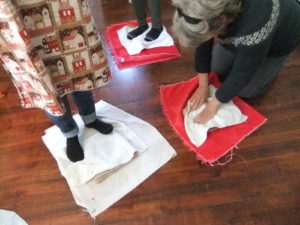
- Mix Koji and salt well until it feels moist
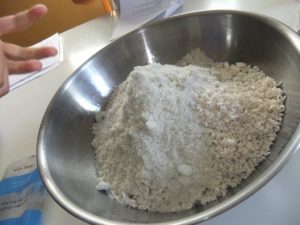
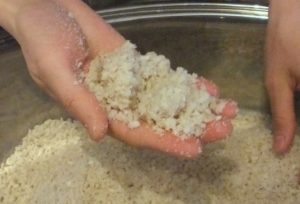
- Mix mushed beans and Koji mixture

- Pack in the container
Make balls and pack to eliminate air as much as possible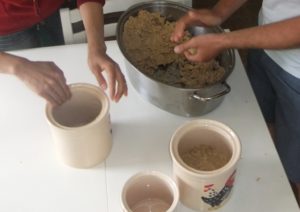

Smooth the surface. Sprinkle salt if you prefer (extra protection to prevent contamination)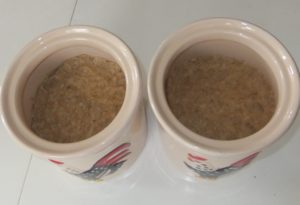
- Cover with plastic wrap
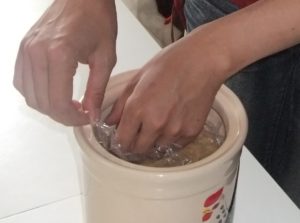
- Set the inside lid and weight. Cover with the top (container’s) lid (or cover with newspaper and tie with a string). Label (recipe, date).
** Mason Jar Method **
Pack to the top of a mason jar (wide mouth). Sprinkle salt on the top. Cover with plastic wrap tightly and secure with a plastic lid. No need of weight.
Label (recipe, date). Set the jar in a container to catch the overflowing liquid (miso tamari).

- Store in a dark place where the temperature is fairly stable for 7 months to a year.
NOTE:
Sterilize the utensils and work space thoroughly. Do not consume it if anything is suspicious.
If you use a pressure cooker to cook beans, steam rather than cook in water. It is very dangerous if peeled bean skin clogs the pressure cooker ventilation.
Trouble Shooting:
If you see something growing…
Related Post:
Join our Semi Annual Miso Making Workshop
